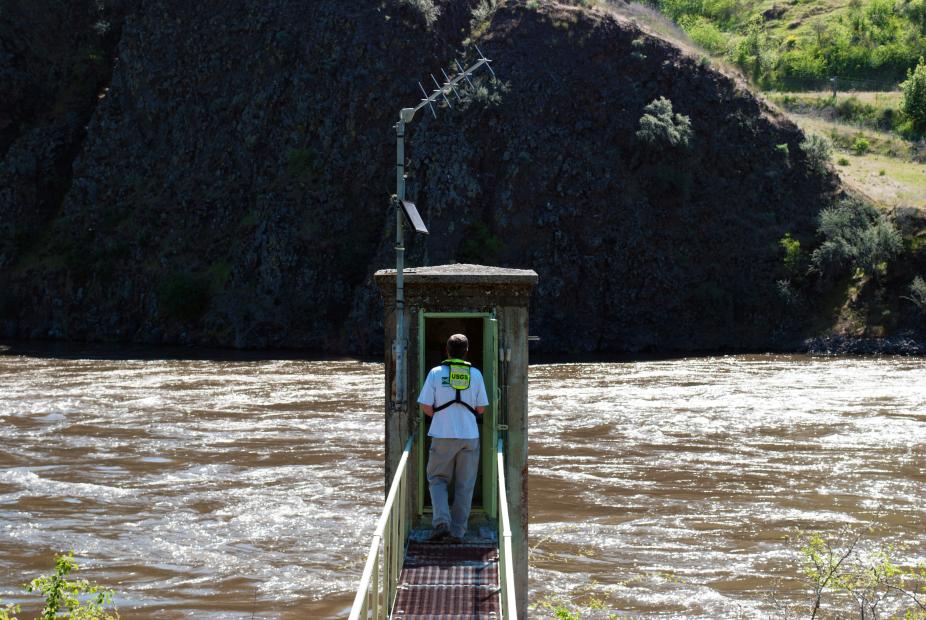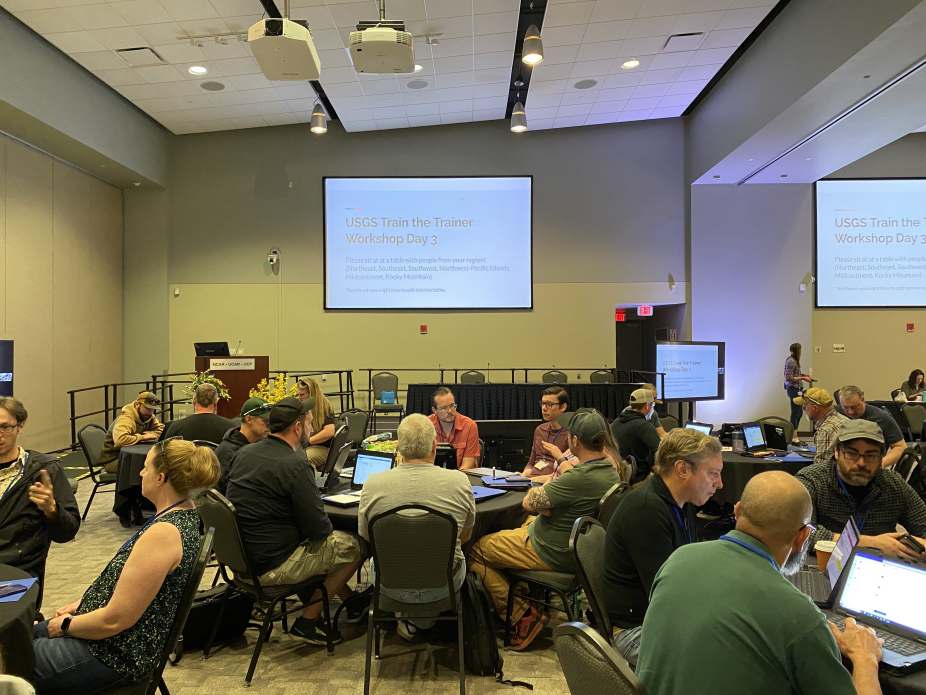Checking our rivers’ vitals: Hydrologic technicians and streamgages
How do we get ahead of floods, prepare for droughts, and protect future water supplies? Streamgages—structures that contain instruments that measure and record the amount of water flowing or discharging from a river or stream—are key to answering these questions. The measurements provided by streamgages, much like the pulse of blood flow in the human body, are vital to understanding the health of our waterways. With the information they provide, scientists and officials can coordinate to save lives, protect property, and determine how best to protect precious water resources.
Chances are you’ve seen one of these unassuming metal structures with their side antennas while passing by a river—there are more than 11,800 dotting waterways across the United States. Hydrologic technicians ensure the streamgages are collecting accurate data. They also make site visits to manually collect regular measurements and troubleshoot any issues to conduct analyses to help solve water-related problems.

A hydrologic technician gathering data at a streamgage on Salmon River at White Bird, Idaho
Idaho Water Science Center
Hydrologic technicians need an array of technical skills to collect and report accurate data that is required to make water-resources decisions, and that’s where COMET comes in. Through a partnership with the Cooperative Programs for the Advancement of Earth System Science (CPAESS), COMET is working with the United States Geological Survey (USGS) Water Resources Mission Area to develop training assets to support hydrologic technicians.
From there, CPAESS hired a team of contractors to establish a Workforce Development and Training (WD&T) team for the USGS Water Mission Area (WMA), and COMET hired hydrologist Erin Houlihan to lead the training development.
The teams gathered during a “Train the Trainer'' three-day workshop in which they welcomed about 50 USGS staff to Boulder, Colorado, to, as Houlihan describes, “improve training effectiveness and learn best practices for adult learning.” From there, the teams completed the first phase of the training, which recently wrapped up with the publication of six lessons focused on Streamgage Basics on MetEd.

USGS and COMET staff collaborate during day three of the "Train the Trainer" workshop in Boulder, Colorado.
Erin Houlihan
And these lessons are already in use via USGS training boot camps and as prerequisites for hydro technicians!
“I have been using the material as an add on to our training here in Oklahoma-Texas,” shared Cary Carman, a physical scientist and technical training specialist at the Oklahoma-Texas Water Science Center. "We created a training class based on the Streamgage Basics materials where we built streamgages with common errors that the students had to identify and fix using the basic electronics and streamgage troubleshooting techniques from the MetEd lessons."
“We’re really excited about the launch,” said Houlihan. “We are thrilled for the USGS techs to use them, give us feedback, and to inform the development of phase two.”
The second phase will focus on groundwater and water quality and will continue the partnerships between USGS, CPAESS, and COMET. Check back for latest updates and to join us on our mission to advance weather, water, and climate fields through scientifically robust, accessible, fascinating, and impactful education and training.